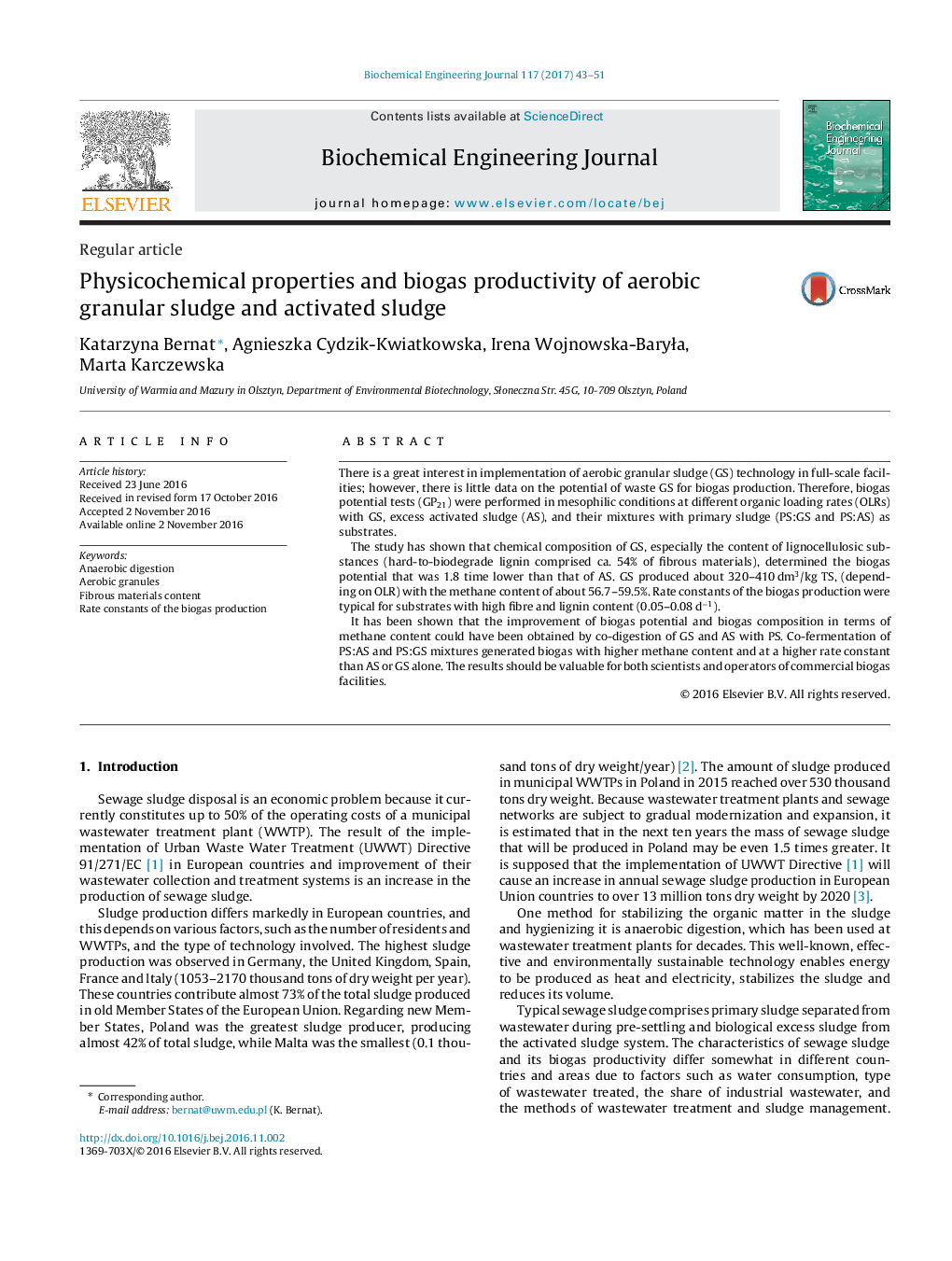| Article ID | Journal | Published Year | Pages | File Type |
|---|---|---|---|---|
| 6450436 | Biochemical Engineering Journal | 2017 | 9 Pages |
â¢Fermentation of granular (GS), activated (AS) and primary (PS) sludges was compared.â¢High lignin content in GS lowered biogas yield and rate of biogas production.â¢Co-digestion of GS or AS with PS improved biogas yield and methane content.â¢Theoretical biogas production of GS, AS and PS was determined.
There is a great interest in implementation of aerobic granular sludge (GS) technology in full-scale facilities; however, there is little data on the potential of waste GS for biogas production. Therefore, biogas potential tests (GP21) were performed in mesophilic conditions at different organic loading rates (OLRs) with GS, excess activated sludge (AS), and their mixtures with primary sludge (PS:GS and PS:AS) as substrates.The study has shown that chemical composition of GS, especially the content of lignocellulosic substances (hard-to-biodegrade lignin comprised ca. 54% of fibrous materials), determined the biogas potential that was 1.8 time lower than that of AS. GS produced about 320-410Â dm3/kg TS, (depending on OLR) with the methane content of about 56.7-59.5%. Rate constants of the biogas production were typical for substrates with high fibre and lignin content (0.05-0.08Â dâ1).It has been shown that the improvement of biogas potential and biogas composition in terms of methane content could have been obtained by co-digestion of GS and AS with PS. Co-fermentation of PS:AS and PS:GS mixtures generated biogas with higher methane content and at a higher rate constant than AS or GS alone. The results should be valuable for both scientists and operators of commercial biogas facilities.
